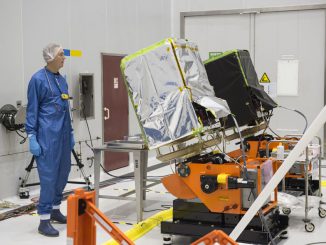EDITOR’S NOTE: Updated Jan. 21 with additional photos.

SpaceX simulated an in-flight emergency Sunday to verify the company’s Crew Dragon spacecraft has the capability to catapult itself away from a failing Falcon 9 rocket.
The in-flight abort test demonstrated the human-rated capsule can safely and rapidly fly away from a Falcon 9 rocket experiencing a failure.
As intended, the Falcon 9’s engines prematurely shut down around 84 seconds after liftoff Sunday from the Kennedy Space Center. The automated Crew Dragon capsule fired its own thrusters to escape the rocket before it disintegrated in an orange fireball high over Florida’s Space Coast.
After a one-day delay due to rough seas in the splashdown zone — and a two-and-a-half-hour hold Sunday to wait for improved winds — the Crew Dragon spacecraft lifted off on top of a SpaceX Falcon 9 rocket at 10:30 a.m. EST (1530 GMT) Sunday from pad 39A at Kennedy, the same launch pad once used by NASA’s Saturn 5 moon rockets and space shuttles.
The 215-foot-tall (65-meter) rocket flew off the launch pad powered by nine kerosene-fueled Merlin 1D engines and pitched on an easterly trajectory from the Florida spaceport.
The Falcon 9 surpassed the speed of sound in less than a minute, and the Crew Dragon’s pre-programmed escape sequence initiated around 84 seconds after liftoff, when the rocket was at an altitude of roughly 62,000 feet (19 kilometers).
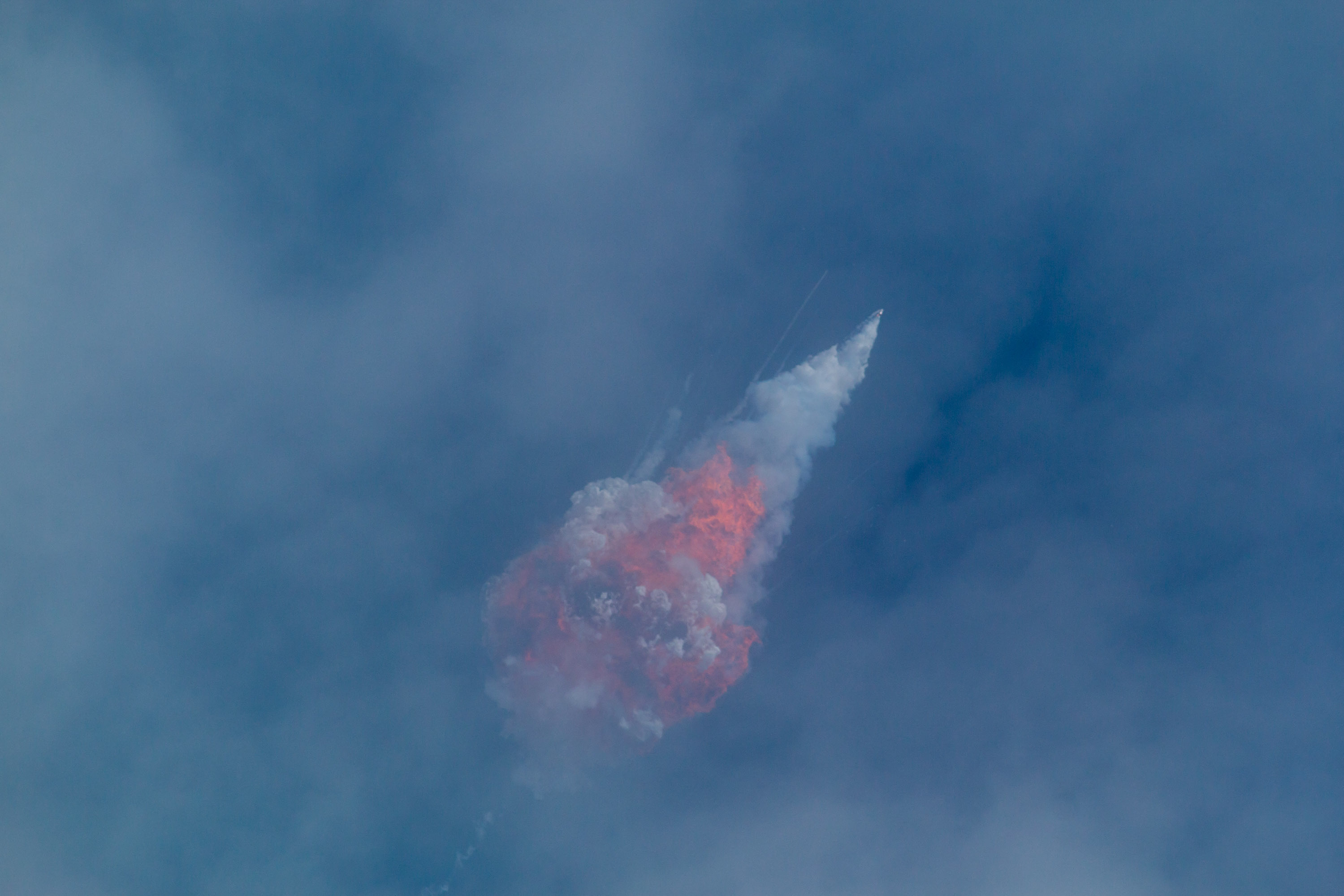
The abort was triggered soon after the point in the launch sequence where the booster and capsule experience the most extreme aerodynamic pressures.
While the nine Merlin engines on the Falcon 9 rocket cut off in response to the escape command, nearly 130,000 pounds of thrust from eight SuperDraco engines pushed the Crew Dragon rapidly away from the top of the launcher.
The rocket disintegrated in a fireball high over the Atlantic Ocean — as officials expected — as the crew capsule sped away from the top of the launcher with a powerful boost from the eight escape engines.
SpaceX said the capsule, and two mannequins seated inside, accelerated at about 3.5Gs during the abort, a relatively gentle ride for astronauts in good physical condition.
The capsule later deployed parachutes and splashed down in the Atlantic for recovery by SpaceX vessels.
Read our full story for details on the abort test.
Additional photos of the Falcon 9’s liftoff and the Crew Dragon abort are posted below.
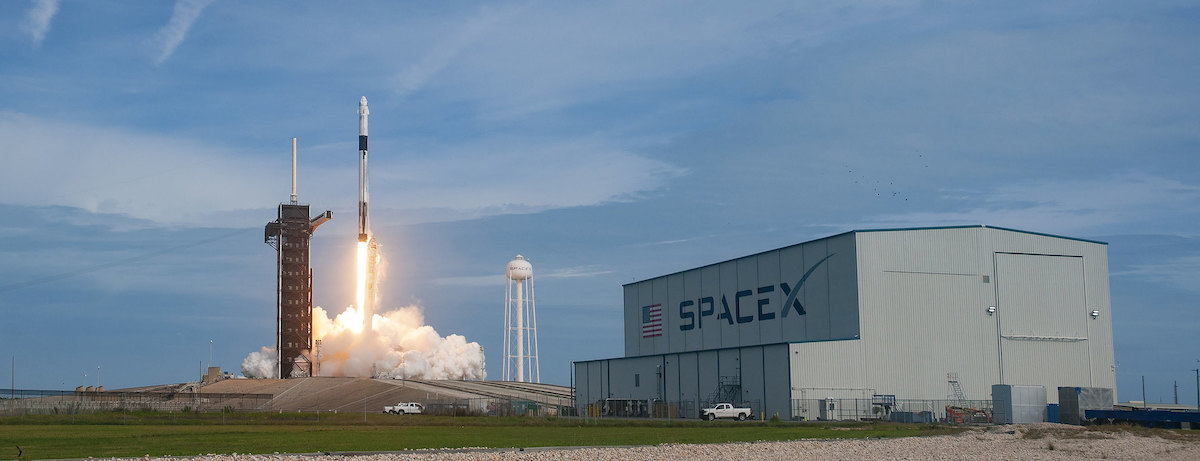
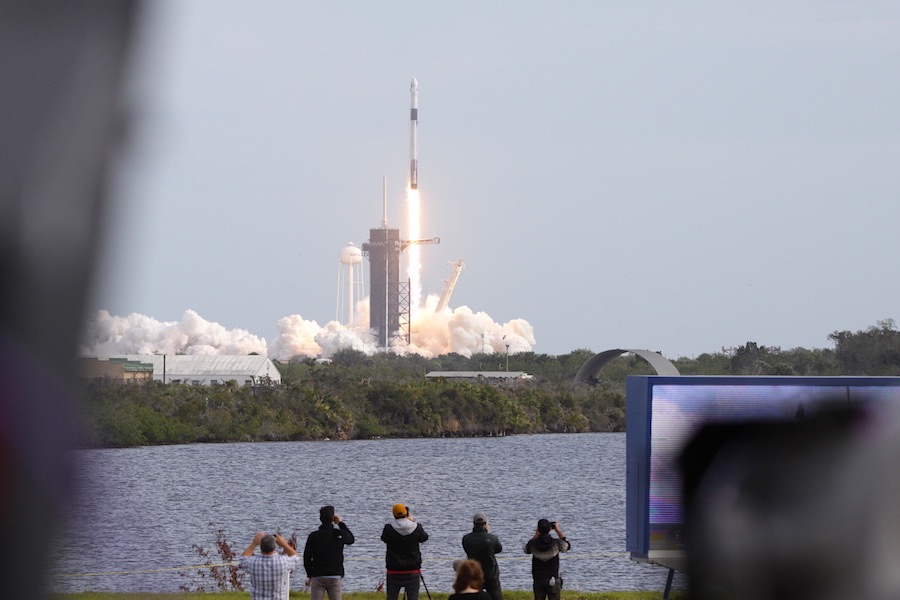
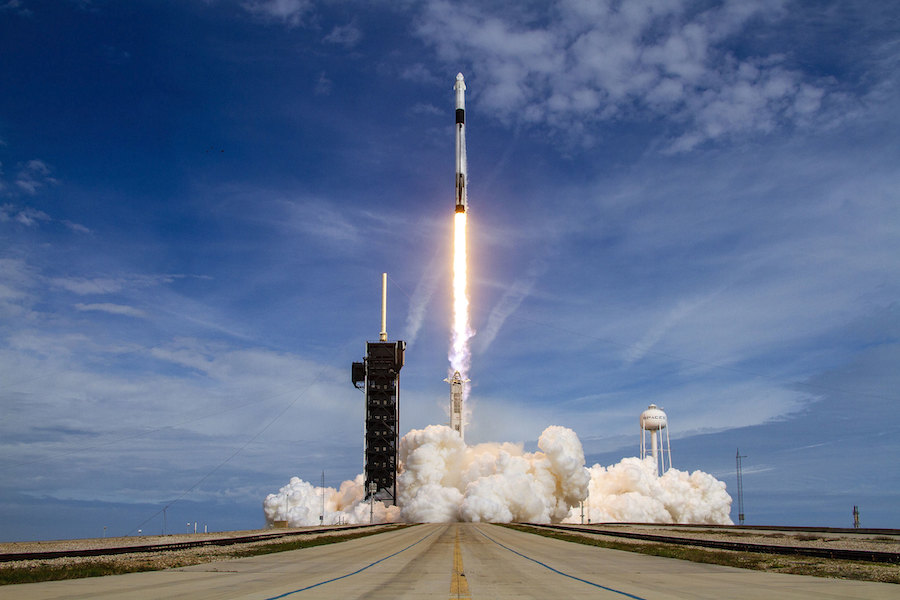
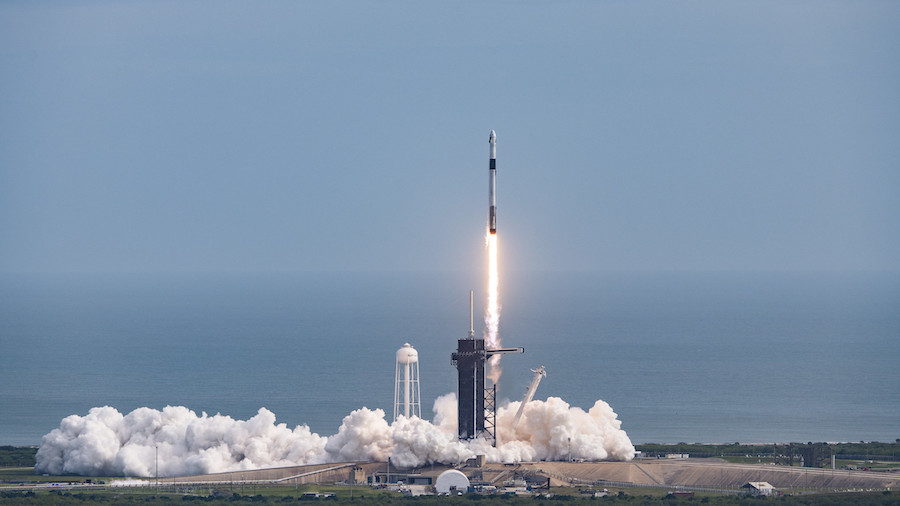
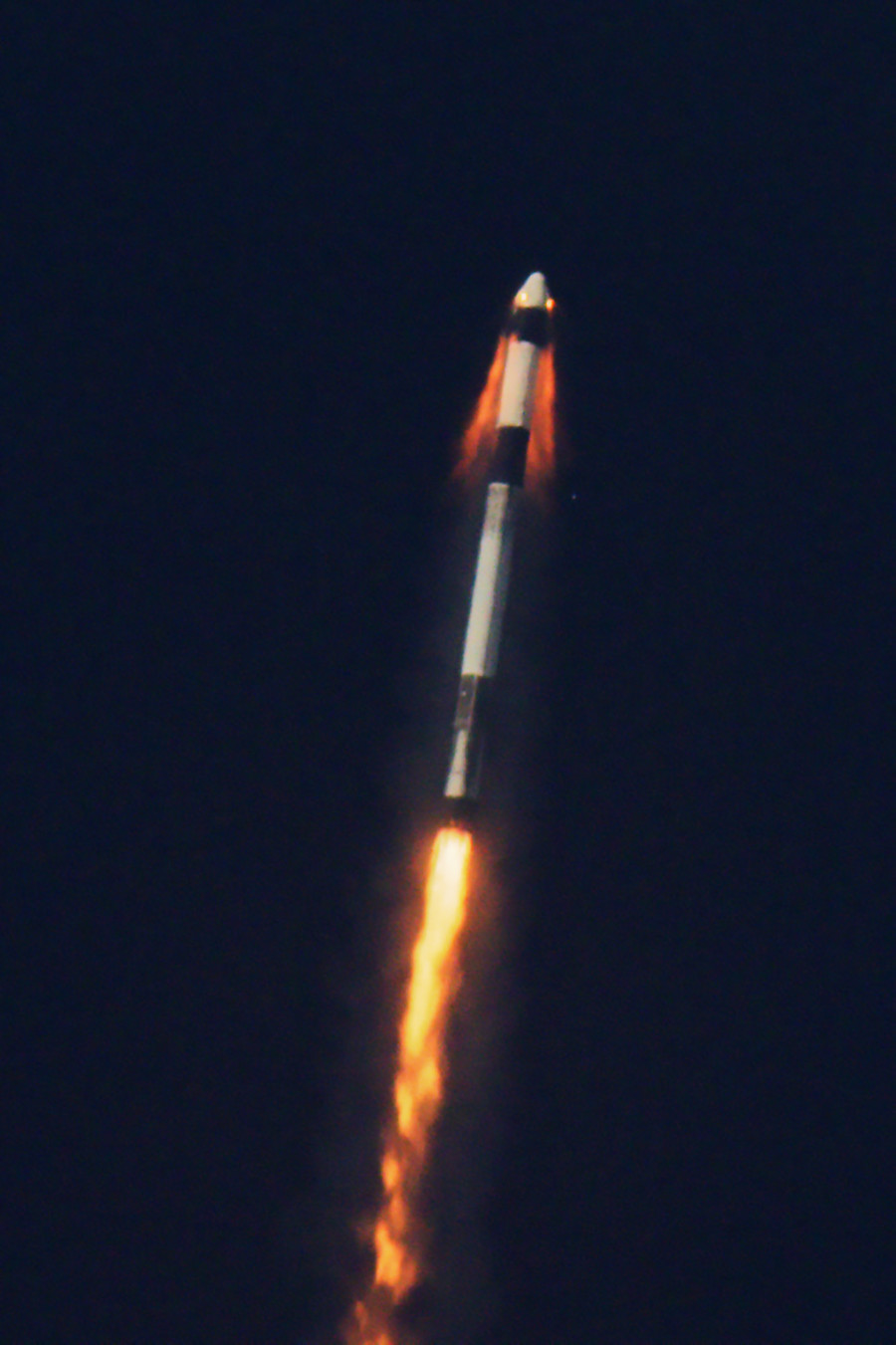
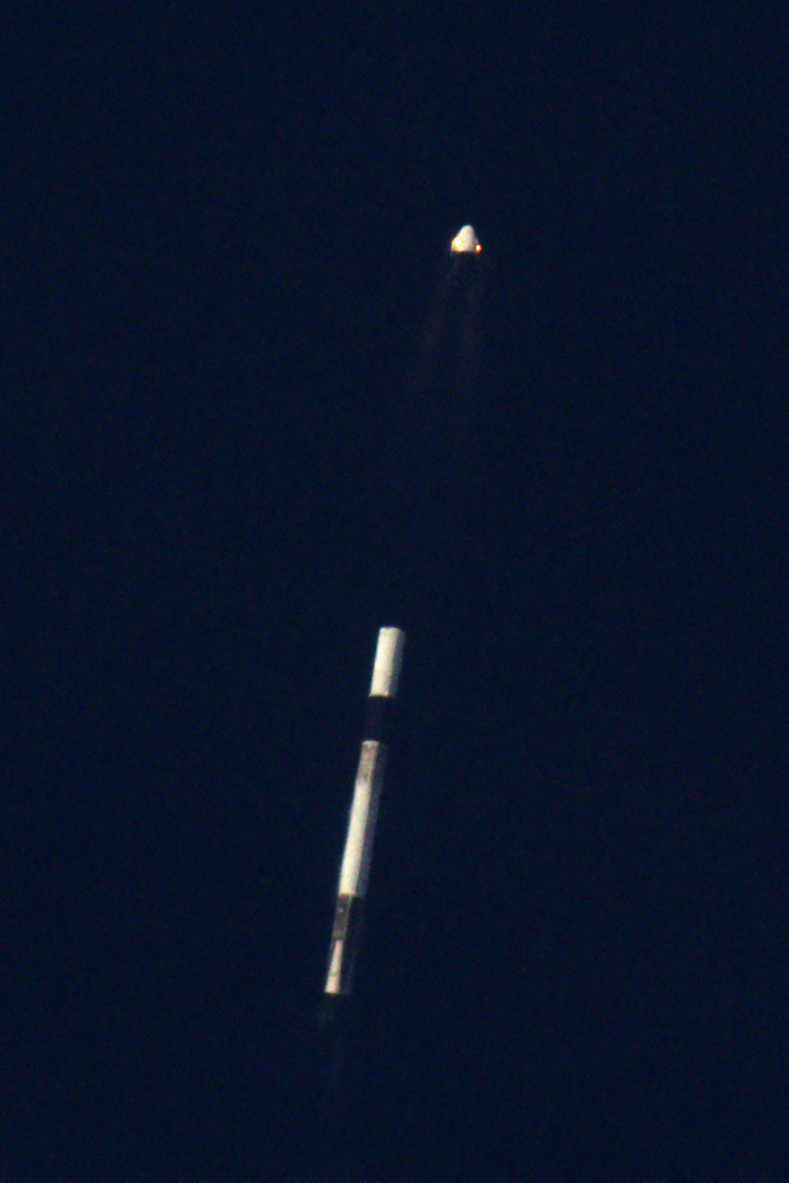
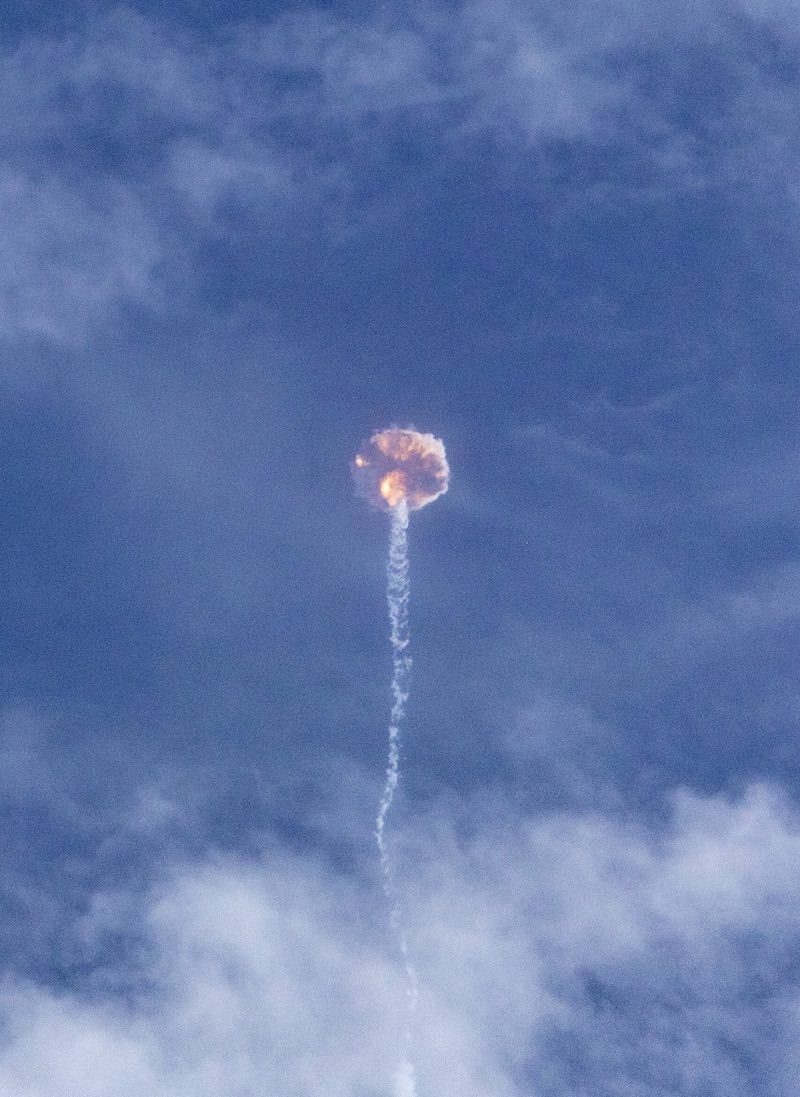
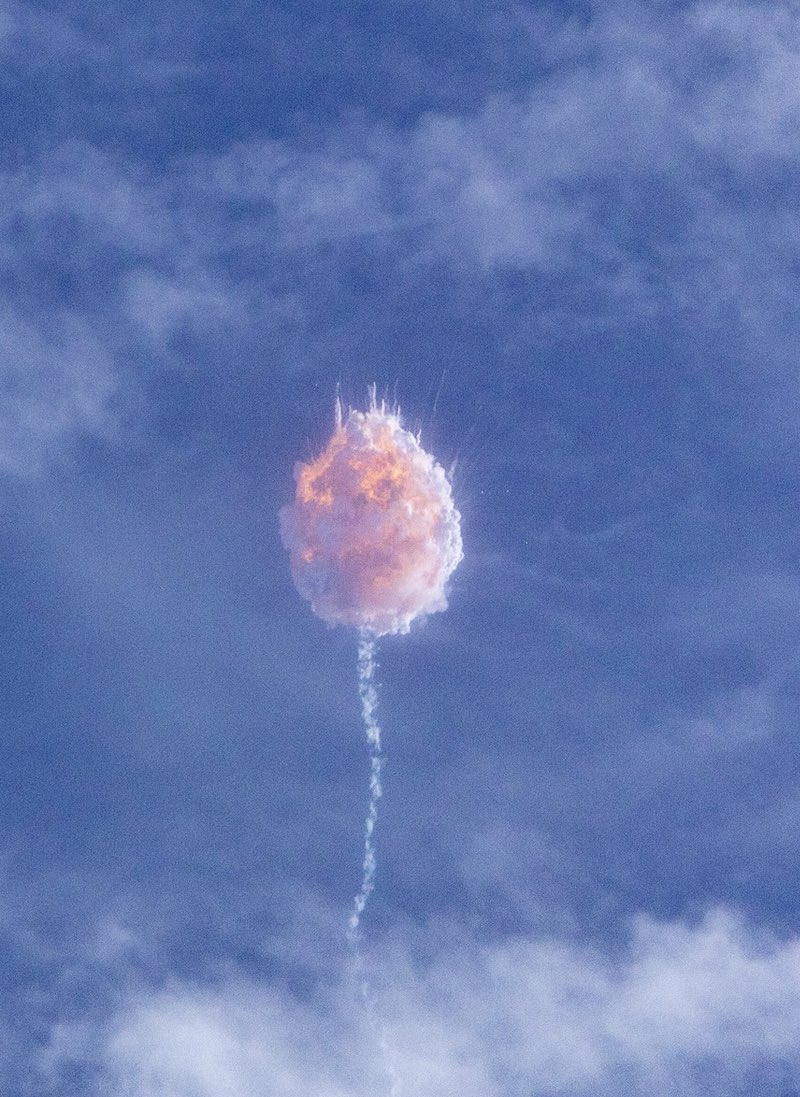
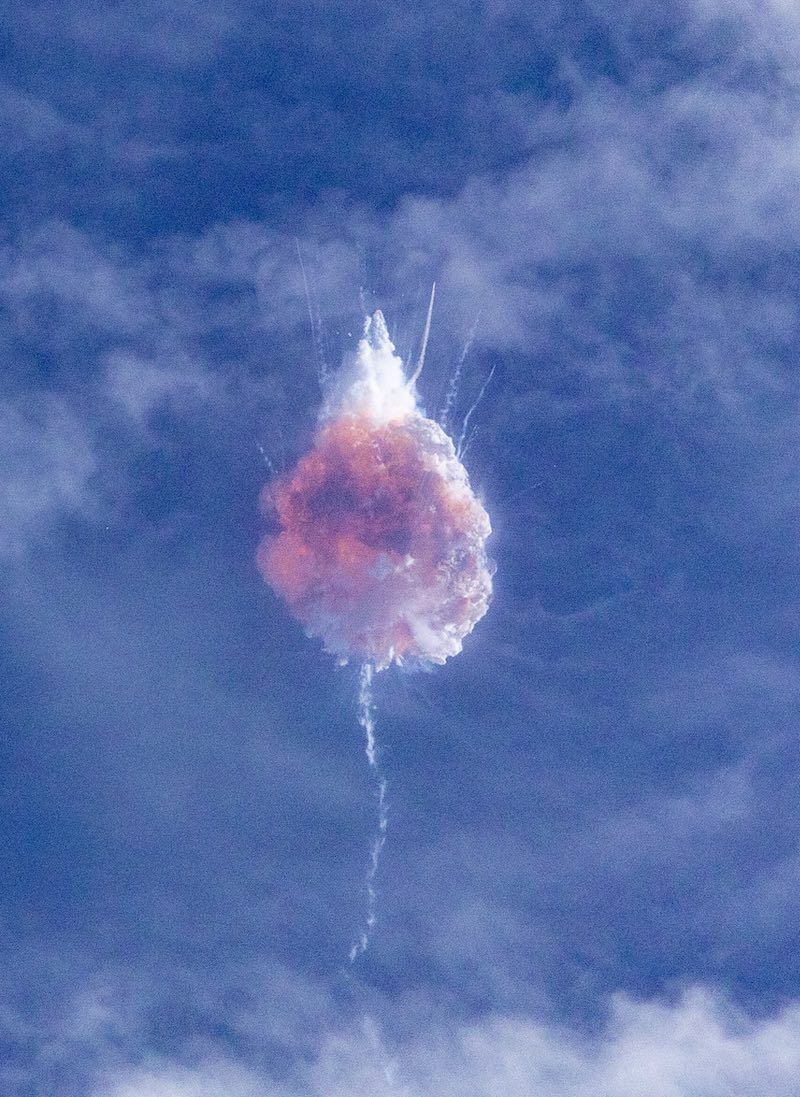
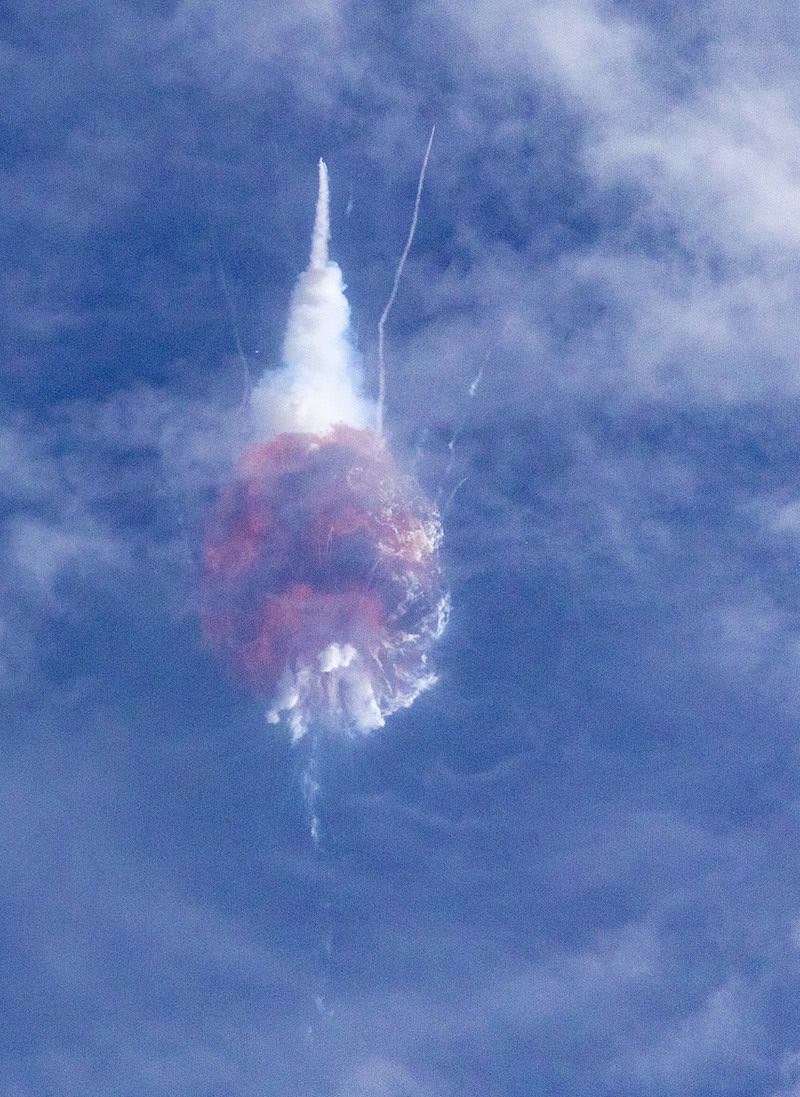
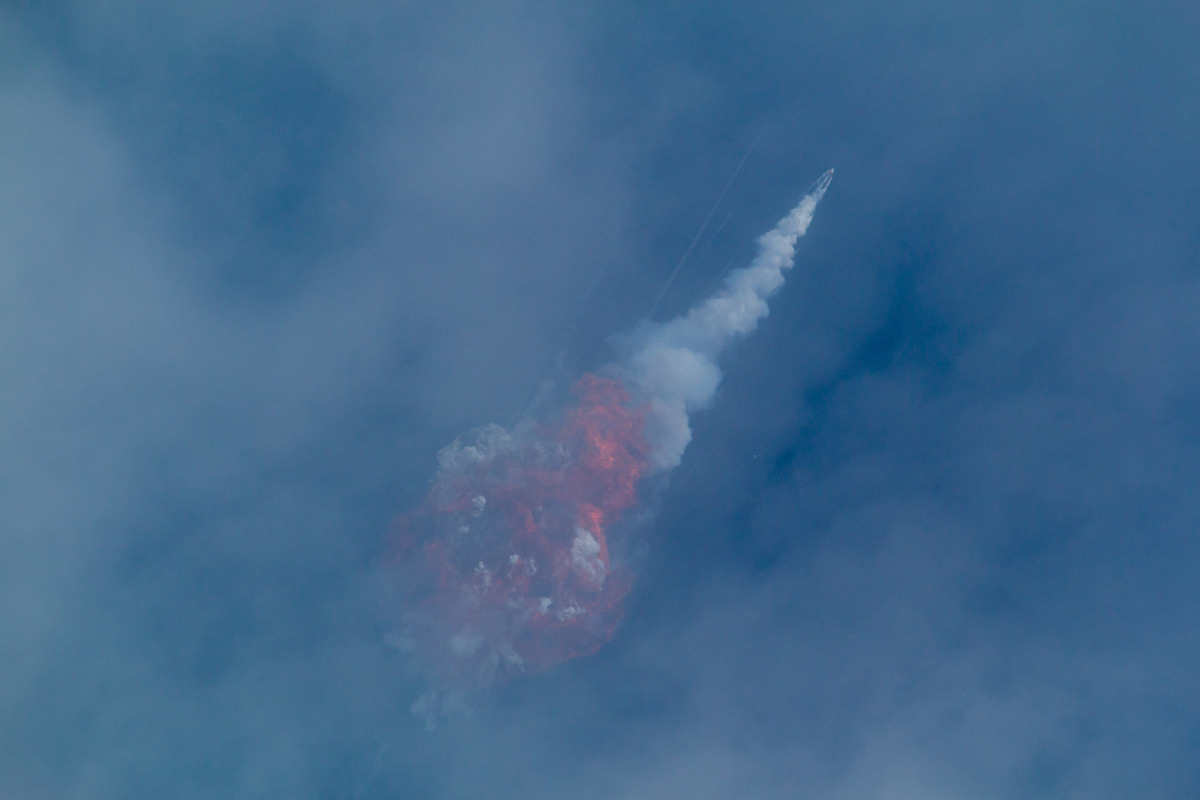
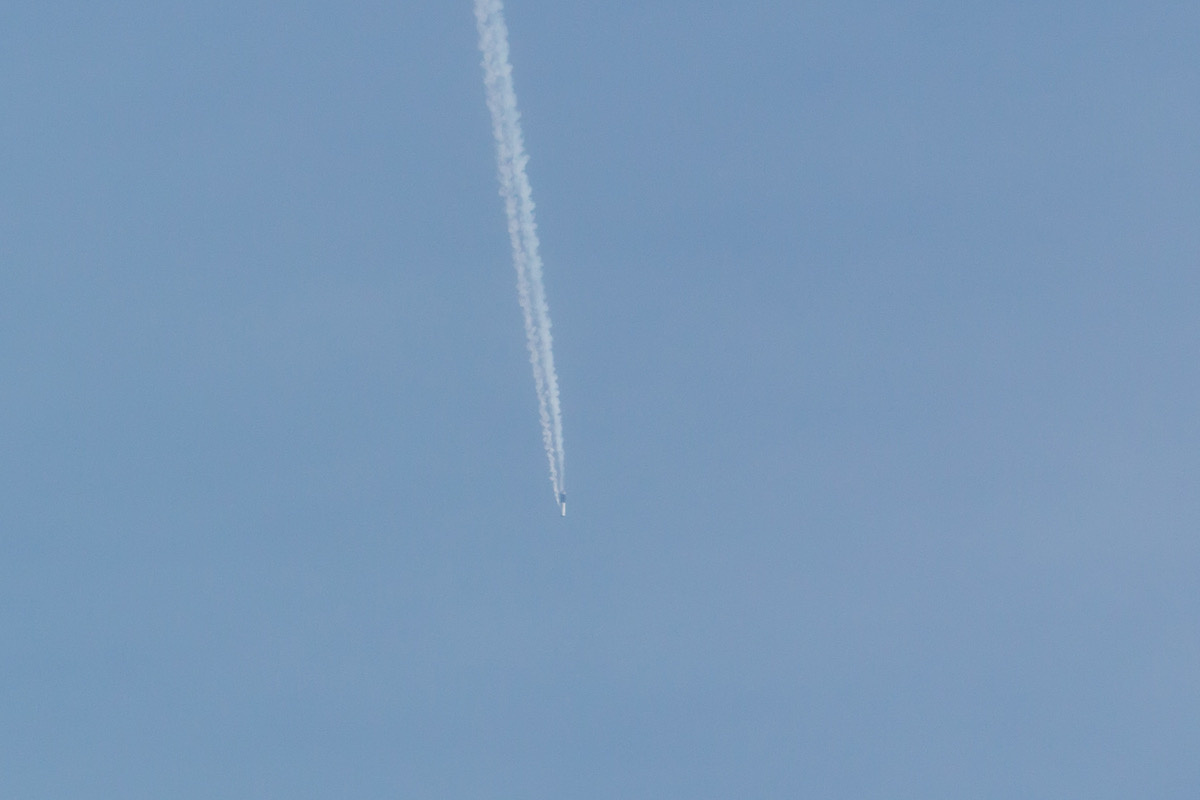
Email the author.
Follow Stephen Clark on Twitter: @StephenClark1.

